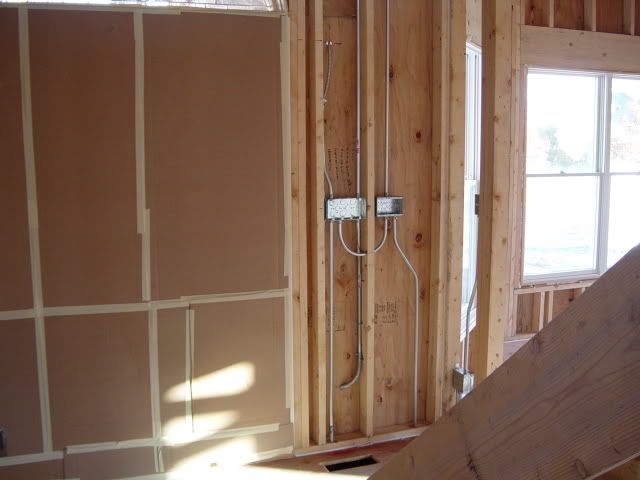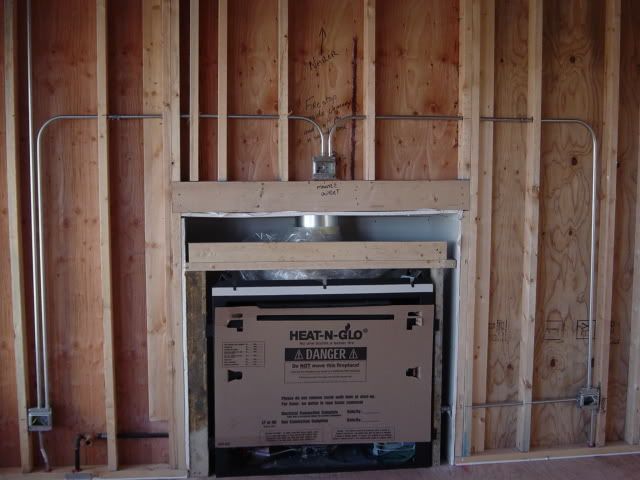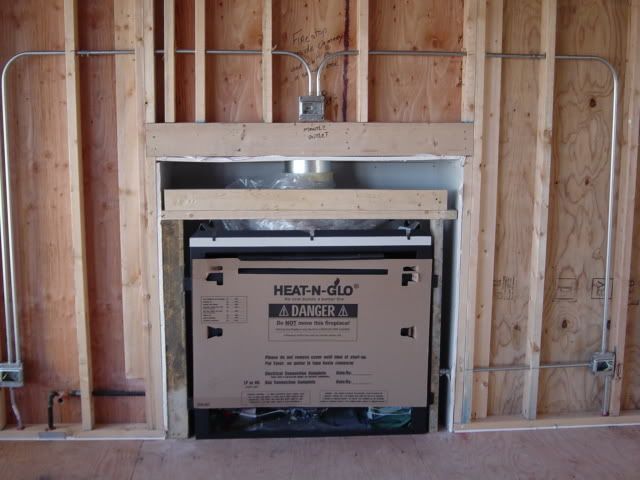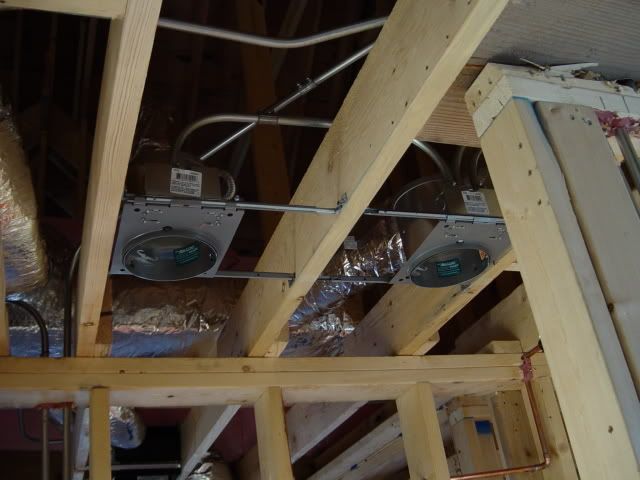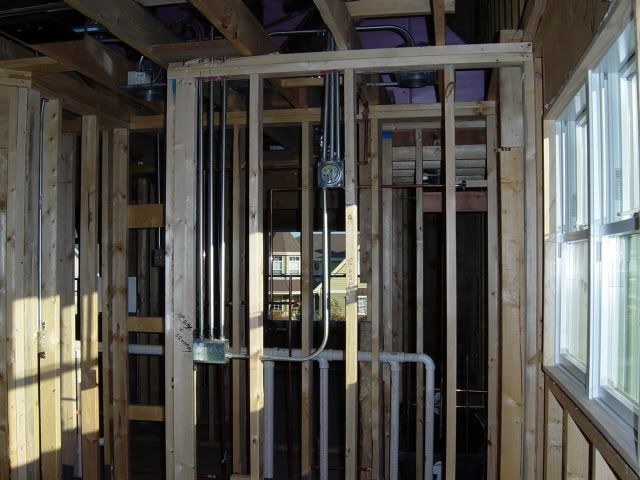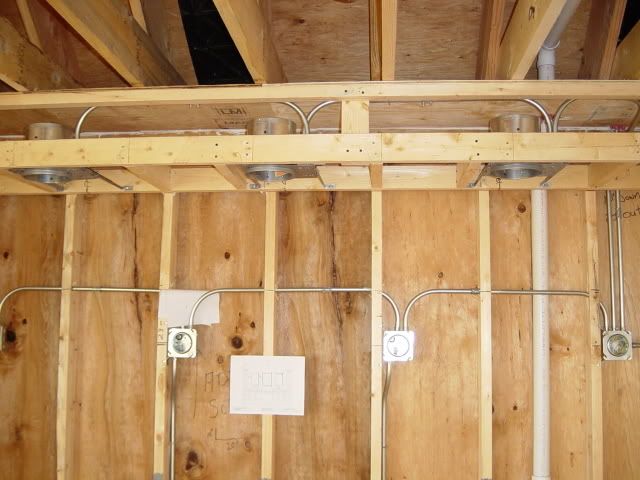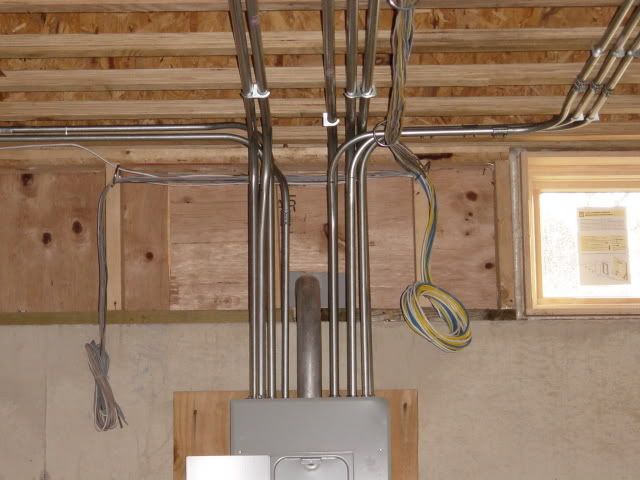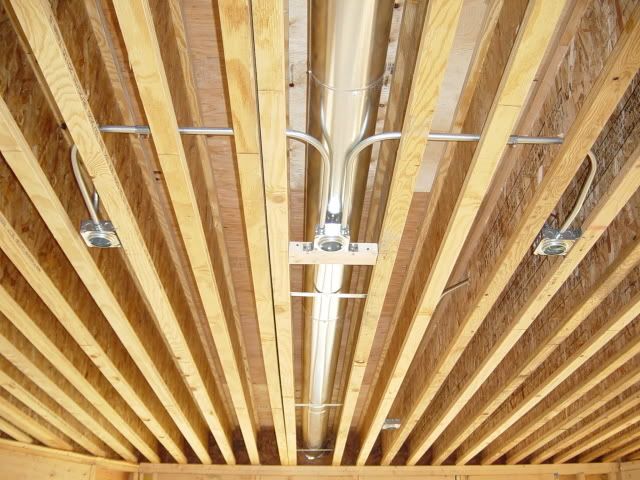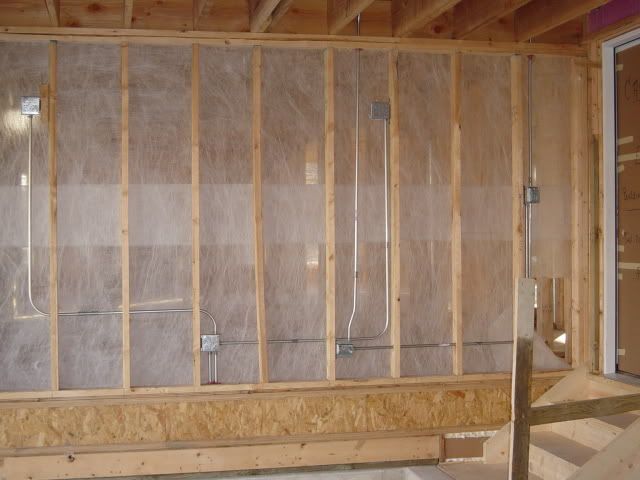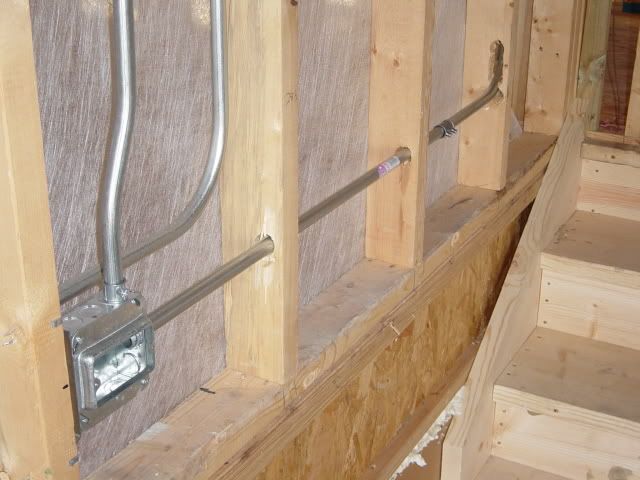lordofpi
Senior Member
- Location
- New Jersey
Hi all. Long time, no post; hope all of you are well. Normally, I don't get involved with too much residential work, but a buddy of mine -- who does mostly residential -- stepped aside and recommended me for this job because the contractor has mandated it be done in EMT due to local ordinance. My piping skills are good, but I am used to dealing with mostly CMU/block walls and exposed-utility installs. I guess this question goes mostly to guys from the Chicago area. I need some tips for running through studs and solid joists and securing EMT to satisfy code the easiest way possible. I tried to search the topic, but of course "EMT" is fewer than four letters long, so it will not parse.
Before I click "Post", two things that have been rattling around in my head: (1) Where in studs is it best to locate holes? Dead center and offset at boxes, or closer to surface to keep in line with box connectors.
And (2), where how is raceway to be supported in long vertical runs (i.e., though floors).
All opinions are appreciated!
Before I click "Post", two things that have been rattling around in my head: (1) Where in studs is it best to locate holes? Dead center and offset at boxes, or closer to surface to keep in line with box connectors.
And (2), where how is raceway to be supported in long vertical runs (i.e., though floors).
All opinions are appreciated!


